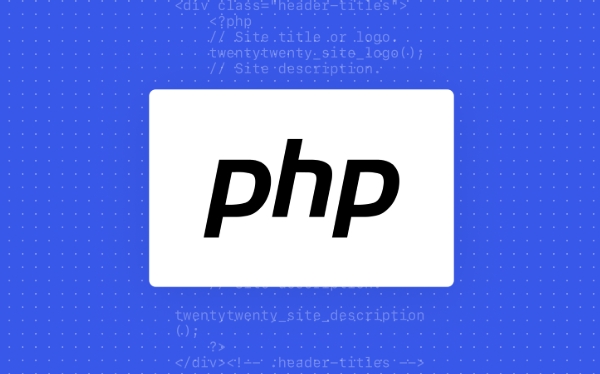PHP provides a variety of string to lowercase methods, suitable for different scenarios. 1. The strtolower() function is suitable for most English scenarios, converting uppercase letters to lowercase, but poor support for non-ASCII characters; 2. mb_strtolower() supports multilingual, more accurate processing of Unicode encoding, and suitable for special characters such as French and German; 3. You can clean spaces or symbols in combination with trim() or preg_replace() to generate slug format; 4. Use LOWER() to achieve fuzzy matching in database queries, pay attention to whether the index is case sensitive. For pure English systems, strtolower() is used, while for internationalization requirements, mb_strtolower() is used.

Sometimes when dealing with strings, case problems can cause a lot of trouble. For example, the data entered by users or obtained from external interfaces may have a different format, so you need to convert the string into lowercase to process.

PHP provides several simple and practical methods to do this, and the following is the real information.
1. Use strtolower() function
This is the most commonly used and direct way. strtolower() will convert all uppercase letters in the entire string to lowercase, and other characters will remain unchanged.

Example:
$str = "Hello, WORLD!"; echo strtolower($str); // Output: hello, world!
This function works for most English scenarios, but if your string contains non-ASCII characters (such as accented letters), it may not work as you expected. At this time, we need to consider multilingual support.

2. Multilingual support? Try mb_strtolower()
If your application involves multiple languages, such as French, German, Chinese pinyin, etc., it is recommended to use mb_strtolower() function. It is a multi-byte secure version that is more suitable for handling Unicode-encoded strings.
Example:
$str = "?rger"; echo mb_strtolower($str, 'UTF-8'); // Output: ?rger
Note that you can specify the encoding method here, generally just use 'UTF-8' . This function is more accurate when dealing with special language characters, avoiding garbled code or conversion failure.
3. Combine other operations, such as cleaning spaces or replacing symbols
Sometimes you not only want to turn lowercase, but also want to remove extra spaces, punctuation marks or line breaks. At this time strtolower() and other string processing functions can be used together.
Common combinations:
- First use
trim()to remove the head and tail spaces - Then use
strtolower()to lowercase - Or replace unwanted symbols with
preg_replace()
example:
$input = " Some User Input!"; $clean = strtolower(trim($input)); // Output: some user input!
If you also want to replace the space with a short horizontal line and turn it into the slug format, you can add one step:
$slug = str_replace(' ', '-', $clean); // Output: some-user-input!
4. You can also convert lowercase to database query
Sometimes you do fuzzy matching in the database, such as finding out whether the user name already exists, or you can also convert it to lowercase comparisons at the SQL level.
For example, in MySQL, you can use:
SELECT * FROM users WHERE LOWER(username) = 'testuser';
In this way, no matter whether the stored capital or mixed writing method is correct. However, be careful whether the field index is case sensitive, otherwise it will affect performance.
Basically these methods. In normal development, just choose one according to the specific needs. If it is a pure English system, strtolower() is sufficient; if there is an international need, remember to use mb_strtolower() .
The above is the detailed content of PHP string to lowercase. For more information, please follow other related articles on the PHP Chinese website!

Hot AI Tools

Undress AI Tool
Undress images for free

Undresser.AI Undress
AI-powered app for creating realistic nude photos

AI Clothes Remover
Online AI tool for removing clothes from photos.

Clothoff.io
AI clothes remover

Video Face Swap
Swap faces in any video effortlessly with our completely free AI face swap tool!

Hot Article

Hot Tools

Notepad++7.3.1
Easy-to-use and free code editor

SublimeText3 Chinese version
Chinese version, very easy to use

Zend Studio 13.0.1
Powerful PHP integrated development environment

Dreamweaver CS6
Visual web development tools

SublimeText3 Mac version
God-level code editing software (SublimeText3)

Hot Topics
 Building Immutable Objects in PHP with Readonly Properties
Jul 30, 2025 am 05:40 AM
Building Immutable Objects in PHP with Readonly Properties
Jul 30, 2025 am 05:40 AM
ReadonlypropertiesinPHP8.2canonlybeassignedonceintheconstructororatdeclarationandcannotbemodifiedafterward,enforcingimmutabilityatthelanguagelevel.2.Toachievedeepimmutability,wrapmutabletypeslikearraysinArrayObjectorusecustomimmutablecollectionssucha
 css dark mode toggle example
Jul 30, 2025 am 05:28 AM
css dark mode toggle example
Jul 30, 2025 am 05:28 AM
First, use JavaScript to obtain the user system preferences and locally stored theme settings, and initialize the page theme; 1. The HTML structure contains a button to trigger topic switching; 2. CSS uses: root to define bright theme variables, .dark-mode class defines dark theme variables, and applies these variables through var(); 3. JavaScript detects prefers-color-scheme and reads localStorage to determine the initial theme; 4. Switch the dark-mode class on the html element when clicking the button, and saves the current state to localStorage; 5. All color changes are accompanied by 0.3 seconds transition animation to enhance the user
 VSCode settings.json location
Aug 01, 2025 am 06:12 AM
VSCode settings.json location
Aug 01, 2025 am 06:12 AM
The settings.json file is located in the user-level or workspace-level path and is used to customize VSCode settings. 1. User-level path: Windows is C:\Users\\AppData\Roaming\Code\User\settings.json, macOS is /Users//Library/ApplicationSupport/Code/User/settings.json, Linux is /home//.config/Code/User/settings.json; 2. Workspace-level path: .vscode/settings in the project root directory
 css dropdown menu example
Jul 30, 2025 am 05:36 AM
css dropdown menu example
Jul 30, 2025 am 05:36 AM
Yes, a common CSS drop-down menu can be implemented through pure HTML and CSS without JavaScript. 1. Use nested ul and li to build a menu structure; 2. Use the:hover pseudo-class to control the display and hiding of pull-down content; 3. Set position:relative for parent li, and the submenu is positioned using position:absolute; 4. The submenu defaults to display:none, which becomes display:block when hovered; 5. Multi-level pull-down can be achieved through nesting, combined with transition, and add fade-in animations, and adapted to mobile terminals with media queries. The entire solution is simple and does not require JavaScript support, which is suitable for large
 css full page layout example
Jul 30, 2025 am 05:39 AM
css full page layout example
Jul 30, 2025 am 05:39 AM
Full screen layout can be achieved using Flexbox or Grid. The core is to make the minimum height of the page the viewport height (min-height:100vh); 2. Use flex:1 or grid-template-rows:auto1frauto to make the content area occupy the remaining space; 3. Set box-sizing:border-box to ensure that the margin does not exceed the container; 4. Optimize the mobile experience with responsive media query; this solution is compatible with good structure and is suitable for login pages, dashboards and other scenarios, and finally realizes a full screen page layout with vertical centering and full viewport.
 Full-Stack Web Development with Java, Spring Boot, and React
Jul 31, 2025 am 03:33 AM
Full-Stack Web Development with Java, Spring Boot, and React
Jul 31, 2025 am 03:33 AM
Selecting the Java SpringBoot React technology stack can build stable and efficient full-stack web applications, suitable for small and medium-sized to large enterprise-level systems. 2. The backend uses SpringBoot to quickly build RESTfulAPI. The core components include SpringWeb, SpringDataJPA, SpringSecurity, Lombok and Swagger. The front-end separation is achieved through @RestController returning JSON data. 3. The front-end uses React (in conjunction with Vite or CreateReactApp) to develop a responsive interface, uses Axios to call the back-end API, and ReactRouter
 How to handle transactions in Java with JDBC?
Aug 02, 2025 pm 12:29 PM
How to handle transactions in Java with JDBC?
Aug 02, 2025 pm 12:29 PM
To correctly handle JDBC transactions, you must first turn off the automatic commit mode, then perform multiple operations, and finally commit or rollback according to the results; 1. Call conn.setAutoCommit(false) to start the transaction; 2. Execute multiple SQL operations, such as INSERT and UPDATE; 3. Call conn.commit() if all operations are successful, and call conn.rollback() if an exception occurs to ensure data consistency; at the same time, try-with-resources should be used to manage resources, properly handle exceptions and close connections to avoid connection leakage; in addition, it is recommended to use connection pools and set save points to achieve partial rollback, and keep transactions as short as possible to improve performance.
 Java Performance Optimization and Profiling Techniques
Jul 31, 2025 am 03:58 AM
Java Performance Optimization and Profiling Techniques
Jul 31, 2025 am 03:58 AM
Use performance analysis tools to locate bottlenecks, use VisualVM or JProfiler in the development and testing stage, and give priority to Async-Profiler in the production environment; 2. Reduce object creation, reuse objects, use StringBuilder to replace string splicing, and select appropriate GC strategies; 3. Optimize collection usage, select and preset initial capacity according to the scene; 4. Optimize concurrency, use concurrent collections, reduce lock granularity, and set thread pool reasonably; 5. Tune JVM parameters, set reasonable heap size and low-latency garbage collector and enable GC logs; 6. Avoid reflection at the code level, replace wrapper classes with basic types, delay initialization, and use final and static; 7. Continuous performance testing and monitoring, combined with JMH






